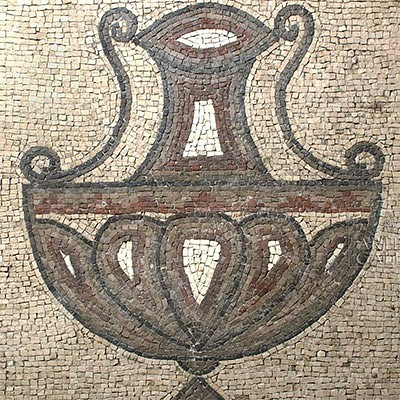Gnathian Pottery Prochous - Extensively Decorated
Lot 50
About Seller
Artemis Gallery
686 S Taylor Ave, Ste 106
Louisville, CO 80027
United States
Selling antiquities, ancient and ethnographic art online since 1993, Artemis Gallery specializes in Classical Antiquities (Egyptian, Greek, Roman, Near Eastern), Asian, Pre-Columbian, African / Tribal / Oceanographic art. Our extensive inventory includes pottery, stone, metal, wood, glass and textil...Read more
Categories
Estimate:
$1,000 - $1,500
Absentee vs Live bid
Two ways to bid:
- Leave a max absentee bid and the platform will bid on your behalf up to your maximum bid during the live auction.
- Bid live during the auction and your bids will be submitted real-time to the auctioneer.
Bid Increments
| Price | Bid Increment |
|---|---|
| $0 | $25 |
| $300 | $50 |
| $1,000 | $100 |
| $2,000 | $250 |
| $5,000 | $500 |
| $10,000 | $1,000 |
| $20,000 | $2,500 |
| $50,000 | $5,000 |
| $100,000 | $10,000 |
| $200,000 | $20,000 |
About Auction
By Artemis Gallery
Sep 22, 2020
Set Reminder
2020-09-22 12:00:00
2020-09-22 12:00:00
America/New_York
Bidsquare
Bidsquare : Antiquities - Egypt, Greece, Italy, Near East
https://www.bidsquare.com/auctions/artemis-gallery/antiquities---egypt-greece-italy-near-east-5663
Featuring Egyptian, Greek, Roman, Etruscan & Near Eastern art. If you love the classics, this is the sale for you. All artifacts offered for sale have been legally acquired, are legal to sell and are guaranteed to be as described. In-house shipping for your convenience. Artemis Gallery info@artemisgallery.com
Featuring Egyptian, Greek, Roman, Etruscan & Near Eastern art. If you love the classics, this is the sale for you. All artifacts offered for sale have been legally acquired, are legal to sell and are guaranteed to be as described. In-house shipping for your convenience. Artemis Gallery info@artemisgallery.com
- Lot Description
Greek colony of Apulia, Gnathian, named after the town of Ignazia in southeastern Italy, ca. 340 to 320 BCE. A beautiful and graceful pouring vessel used for dispensing precious oils, painted in the classic Gnathian manner, its deep black glaze painted post-firing in a lively palette of added fugitive red, yellow, and white shades with several registers of finely delineated decoration - including egg-and-dart, zigzag, dotted, lozenge, and nested "Z" motifs framing a central wide register of a leafy tendril with a lovely twelve-petaled flower at the center. A pair of masquettes further adorn the junctures between the handle and the spout. Its glossy black surface has attained a silvery iridescence with age. Size: 2.875" in diameter x 7.25" H (7.3 cm x 18.4 cm)
Gnathian ware is named for the site where it was first discovered - the Apulian site of Egnathia. The black glaze ware is traditionally decorated with floral motifs in red, white, or yellow hues. Scholars believe that its production most likely was centered around Taras, with primary workshops in Egnathia and Canosa. The quantity and quality of Greek colonial Apulian potters increased significantly following the Peloponnesian War when Attic exports dramatically decreased. Apulian artistry demonstrates influences of Ionian (Athenian, Attic) conventions, as well as Doric (western colonial Greek) styles, with a palpable native Italian aesthetic.
Provenance: ex-Estate of Eldert Bontekoe, Pegasi Numismatics, Ann Arbor, Michigan USA acquired before 2000
All items legal to buy/sell under U.S. Statute covering cultural patrimony Code 2600, CHAPTER 14, and are guaranteed to be as described or your money back.
A Certificate of Authenticity will accompany all winning bids.
We ship worldwide and handle all shipping in-house for your convenience.
#158330Body of vessel professionally repaired from multiple pieces with areas of restoration and some touch up to paint particularly below the handle. Handle repaired from about a half dozen pieces and reattached with restoration/repainting over the break lines. Nicks to high-pointed areas of spout. A small chip and minute nicks to periphery of base.Condition
- Shipping Info
-
All shipping is handled in-house for your convenience. Your invoice from Artemis Gallery will include shipping calculation instructions. If in doubt, please inquire BEFORE bidding for estimated shipping costs for individual items.
-
- Buyer's Premium



 EUR
EUR CAD
CAD AUD
AUD GBP
GBP MXN
MXN HKD
HKD CNY
CNY MYR
MYR SEK
SEK SGD
SGD CHF
CHF THB
THB














